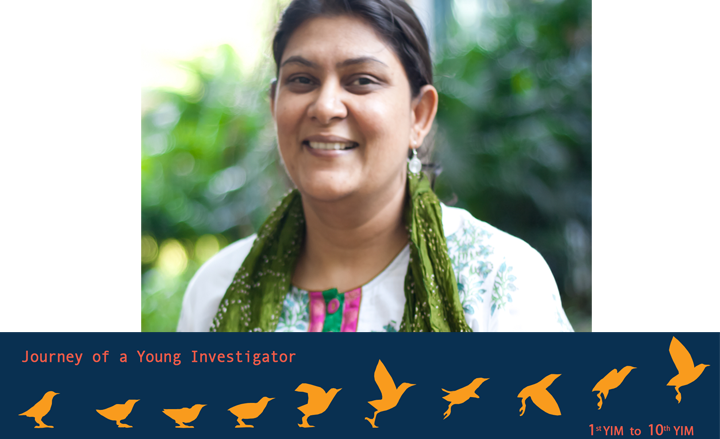Madhulika Dixit is an Associate Professor at Bhupat and Jyoti Mehta School of Biosciences, Indian Institute of Technology Madras. She attended YIM 2010 as a YI. In this invited piece, she writes about her unique experience as a faculty at an institute where majority of researchers are from Engineering background and often unaware of requirements of biological research.

As I pen down this article, I am taken down the memory lane of a young, enthusiastic Assistant Professor in 2007, joining a newly formed School of Biosciences at IIT Madras. Having done my PhD in Molecular Biology from IIT Bombay, I was aware of the hardships of doing research in India, but little did I realise then as a student, that doing Biological research in an Engineering Institute is a different ball game. I guess as PhD students, we were oblivious to struggles that our faculty members had to put up with in establishing the Department of Biotechnology at IIT Bombay way back in late 1980s.
Being allotted a designated lab space, I was all ready to set-up my cell culture Lab in IIT Madras, thanks to generous IYBA funding from DBT. Here I was with my first two students ordering routine instruments and lab-ware when, one fine day I got an SOS call from the purchase section asking me to see the Dean urgently. So, I rushed to his office to find a concerned Dean worried about how can he authorise the order of a “Recombinant Human protein”? His concern was about the “Recombinant Human”! Well, I had placed an order for human recombinant vascular endothelial growth factor (hrVEGF) as a media supplement for my cell culture experiments. So an hour later, only after explaining to him what are engineered bacterial expression systems and by giving him the analogy of commercial insulin production, did I manage to get the purchase order made. I soon realised that I will be spending plenty of my time translating biology to my non-biologist colleagues at IITM, in a language of logics, by borrowing principles of Physics and Chemistry. These experiences and a pertinent advice from my senior colleague in the Department on “Do what is doable”, made me re-invent the way I will be approaching my research in the coming years.
A few years later, I was having this animated discussion with a colleague of mine from Mechanical Engineering Department, about the use of small animals in medical research. Being an ardent animal lover, he was put off with the whole idea of using rodents for pre-clinical studies and insisted on simulating the entire human physiology in silico in order to do away with clinical trials. It was only upon highlighting the complexity of absorption of drug through gut, its clearance from the kidney, detoxification in the liver and the role of tissue perfusion and blood rheology, could I convince him about the multi-dimensionality required to even develop an in silico model, let alone its acceptability for replacing clinical trials in Pharma industry. By this time I was a pro in understanding their language and conversing with them in terms of restrictive boundary conditions, dynamicity, degrees of freedom and the chaos of biological systems. It was the same colleague of mine who came to my rescue when I was trying to design a cone-plate based device to impart laminar shear forces on cultured endothelial cells. His expertise in fluid dynamics came in handy in designing, crafting and validating the instrument. Under his supervision not only did my students make a small portable device in the ‘Institute Workshop’, they also managed to get me a programmable controller to run the set-up non-stop for 72 hours.
We have come a long way since those days of being lost in translation. Now the ‘Stores and Purchase’ section is sensitised to handling perishable biological reagents. The same goes for our Engineering Unit which now ensures uninterrupted power supply to our freezers and our Workshop team which carries out minor repairs of our high end equipment every now and then. I now look forward to discussions with my colleagues, be it in Engineering, Physics, Chemistry or even Mathematics, a subject that I barely managed to clear in my high school.
Today, when I am dealing with large scale micro-array, NGS or proteomics data, I do not feel lost. All I need to do, is to walk to the offices of my colleagues working in machine learning, mathematical modelling, computational biology or metabolic flux analysis. A chat over a cup of coffee with them is always an enthralling prospect as I always leave with new ideas and solutions.
So friends, I would conclude by saying that instead of just making lemonade from lemons, in the interdisciplinary world of IIT, you can make a lemon tart, pie or even a meringue! All it needs from you is to see the glass as being full.